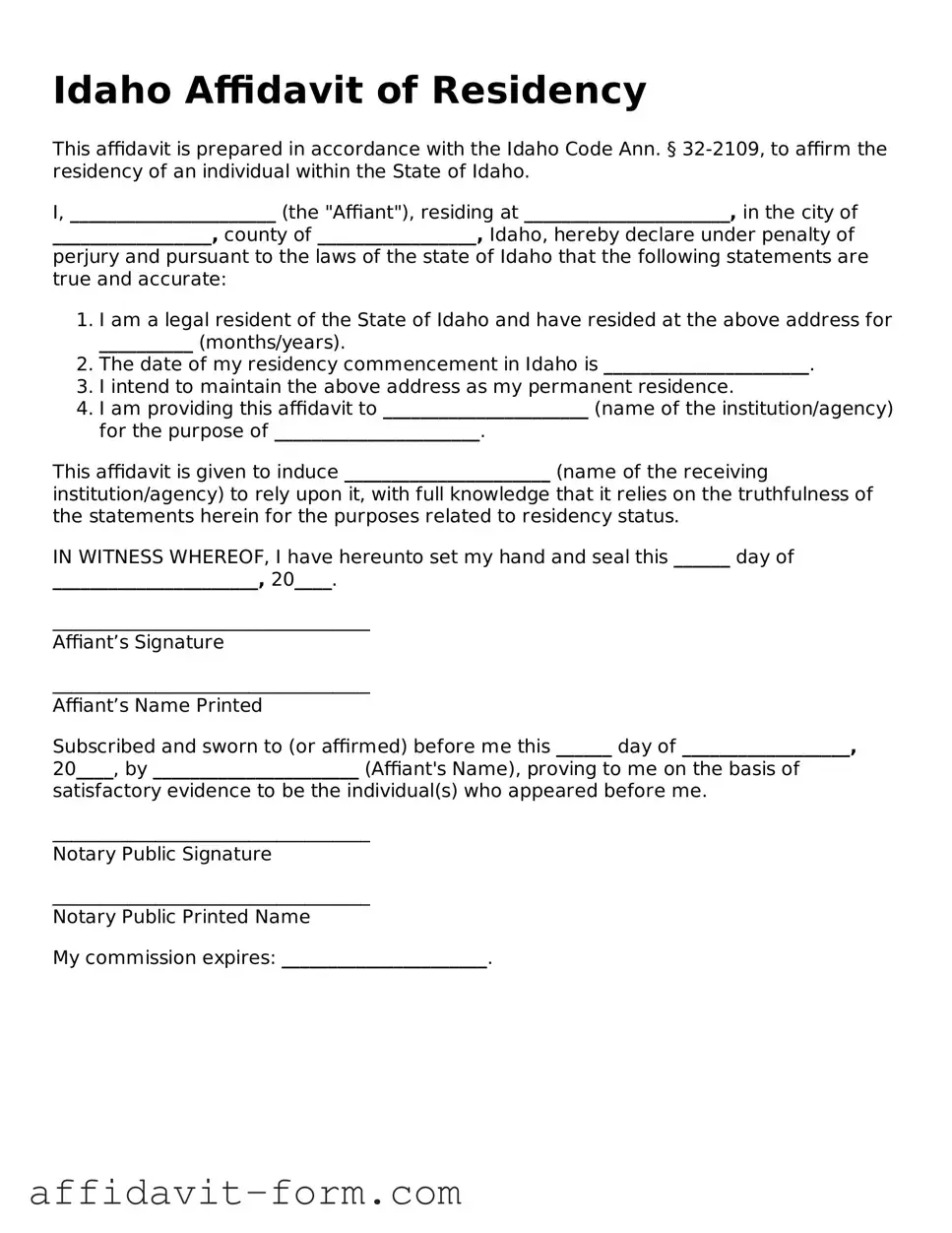Idaho Affidavit of Residency
This affidavit is prepared in accordance with the Idaho Code Ann. § 32-2109, to affirm the residency of an individual within the State of Idaho.
I, ______________________ (the "Affiant"), residing at ______________________, in the city of _________________, county of _________________, Idaho, hereby declare under penalty of perjury and pursuant to the laws of the state of Idaho that the following statements are true and accurate:
- I am a legal resident of the State of Idaho and have resided at the above address for __________ (months/years).
- The date of my residency commencement in Idaho is ______________________.
- I intend to maintain the above address as my permanent residence.
- I am providing this affidavit to ______________________ (name of the institution/agency) for the purpose of ______________________.
This affidavit is given to induce ______________________ (name of the receiving institution/agency) to rely upon it, with full knowledge that it relies on the truthfulness of the statements herein for the purposes related to residency status.
IN WITNESS WHEREOF, I have hereunto set my hand and seal this ______ day of ______________________, 20____.
__________________________________
Affiant’s Signature
__________________________________
Affiant’s Name Printed
Subscribed and sworn to (or affirmed) before me this ______ day of __________________, 20____, by ______________________ (Affiant's Name), proving to me on the basis of satisfactory evidence to be the individual(s) who appeared before me.
__________________________________
Notary Public Signature
__________________________________
Notary Public Printed Name
My commission expires: ______________________.
